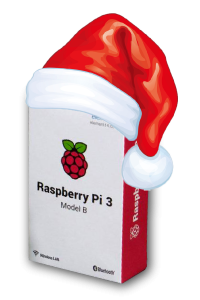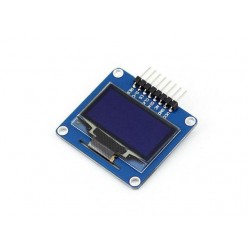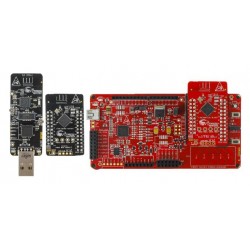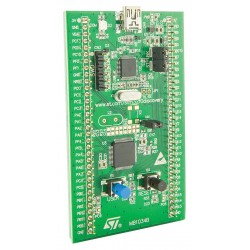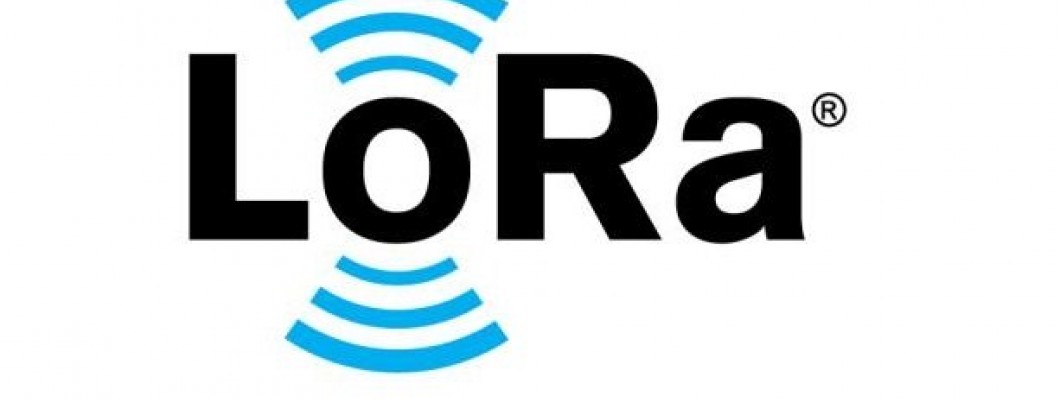
LoRA: Sub-Urban Range Test Results with a 1 Watt Transmitter
Introduction
LoRa (Long Range) is a patented digital wireless data communication technology that enables long-range transmission of data at low power consumption. This post aims to share our findings from a recent LoRa range test in a sub-urban environment, using a 1W transmitter.
Hardware Used
- Outdoor AGM: We used an [Outdoor AGM] setup to monitor the radiation pattern.
- LoRa Transmitter: Ebyte - [E22900M30S]
- GPS: Ublox GPS was used for accurate positioning.
- Receiver Antenna: 15dBi Antenna
- LoRA Gateway: RAK Wireless - [Wisgate Edge Lite 2]
LoRA Settings
- Frequency: ISM Band ( 865-868 MHz)
- SF (Spreading Factor): 12
- BW (Bandwidth): 125kHz
- LoRaWAN Version: 1.0.2 Rev.B
- Device Class: Class A
Test Method
- Environment: Non-line of sight (sub-urban)
- Test Location: Elementz Engineers Guild Pvt Ltd, Headquarters, Plamoodu, Trivandrum
Test Results
Initial Setup
We initially set up the equipment in a non-line-of-sight environment within the sub-urban locale of Plamoodu, Trivandrum. The 1W transmitter was carefully positioned, and the 15dBi receiver antenna was attached to the RAK Wireless Wisgate Edge Lite 2 gateway. We used our Outdoor LoRA-based Gamma Radiation measurement device as the transmitter for conducting the tests.
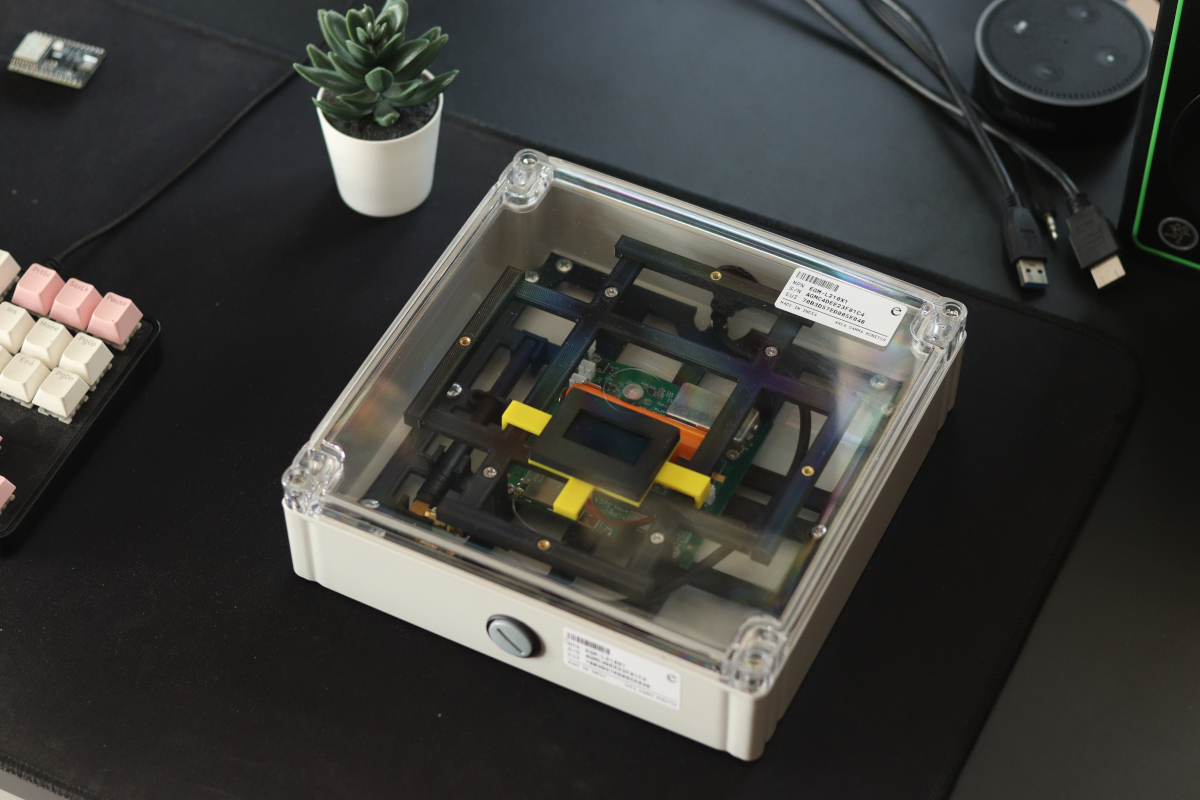
Data Collection
We used the Ublox GPS to log the positions where the LoRa signal was received, along with the respective RSSI (Received Signal Strength Indicator) values. The data was then analyzed to assess the range and reliability of the signal transmission.
Findings
We found that the combination of a 15dBi receiver antenna and a 1W transmitter power allowed us to surpass our previous test results significantly. Our earlier tests in a Line-of-Sight (LOS) environment yielded a range of about 1 km. In this sub-urban, non-LOS test, we were able to achieve a considerably greater range up to 1100 meters.

You can see in the diagram that we have a very poor range in 1 direction ( 600 meters ). This is because the LoRA signals had to travel through 3 concrete inside our building to reach the receiver from that direction, whereas all other 3 directions had only one Glass Wall to be penetrated. Even though we used an Outdoor antenna of 15dBi gain, the antenna was placed inside the office to make it non-LOS to do a worst-case testing with 1 Watt antenna. The results are impressive and shown below !!
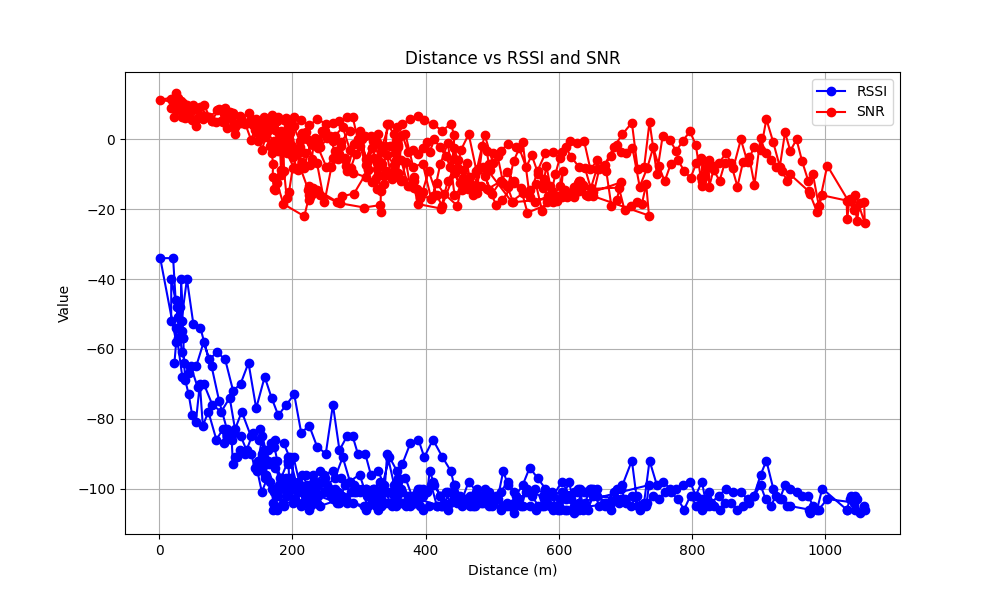
For a comprehensive view of our old test results using a different LoRA hardware, you can visit this [link].
Bonus
We have provided the data captured and tools used for plotting various graphs in our Git Repo! Feel free to use the tools to conduct your own tests.
Conclusion
The use of a 15dBi receiver antenna in combination with a 1W transmitter in a non-line-of-sight, sub-urban environment has shown promising results, exceeding our previous benchmarks. These findings indicate the robustness and reliability of LoRa technology, even in challenging environments. Future work should include tests in different terrains and conditions to validate the scalability of this setup.
We hope this test provides valuable insights for those looking to implement LoRa in sub-urban or similar challenging environments. Feel free to reach out with any questions or for further details on our test methodology.
Disclaimer: The links provided are for informational purposes. Kindly ensure to follow all local and international regulations while setting up and conducting your LoRa tests.

